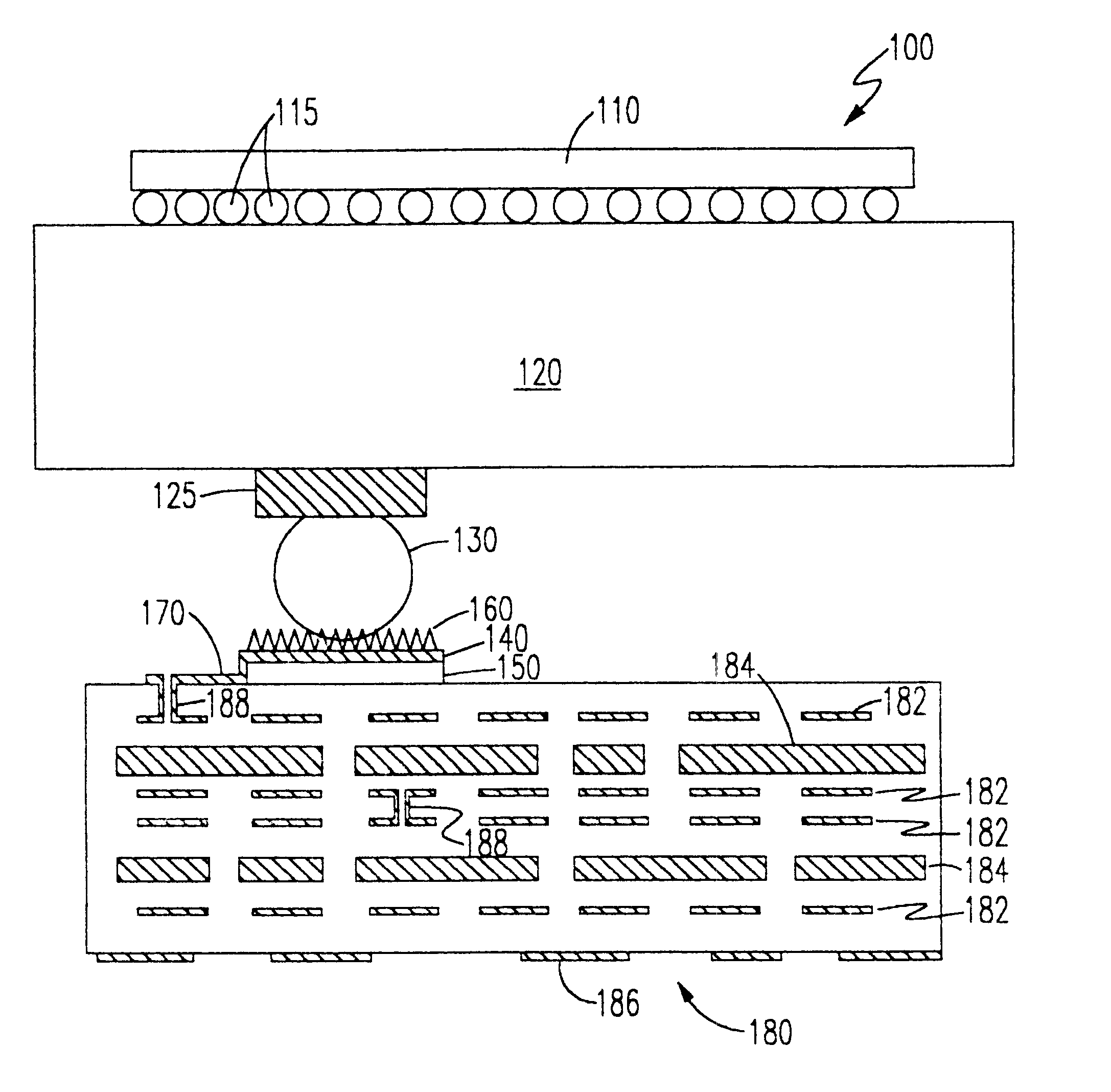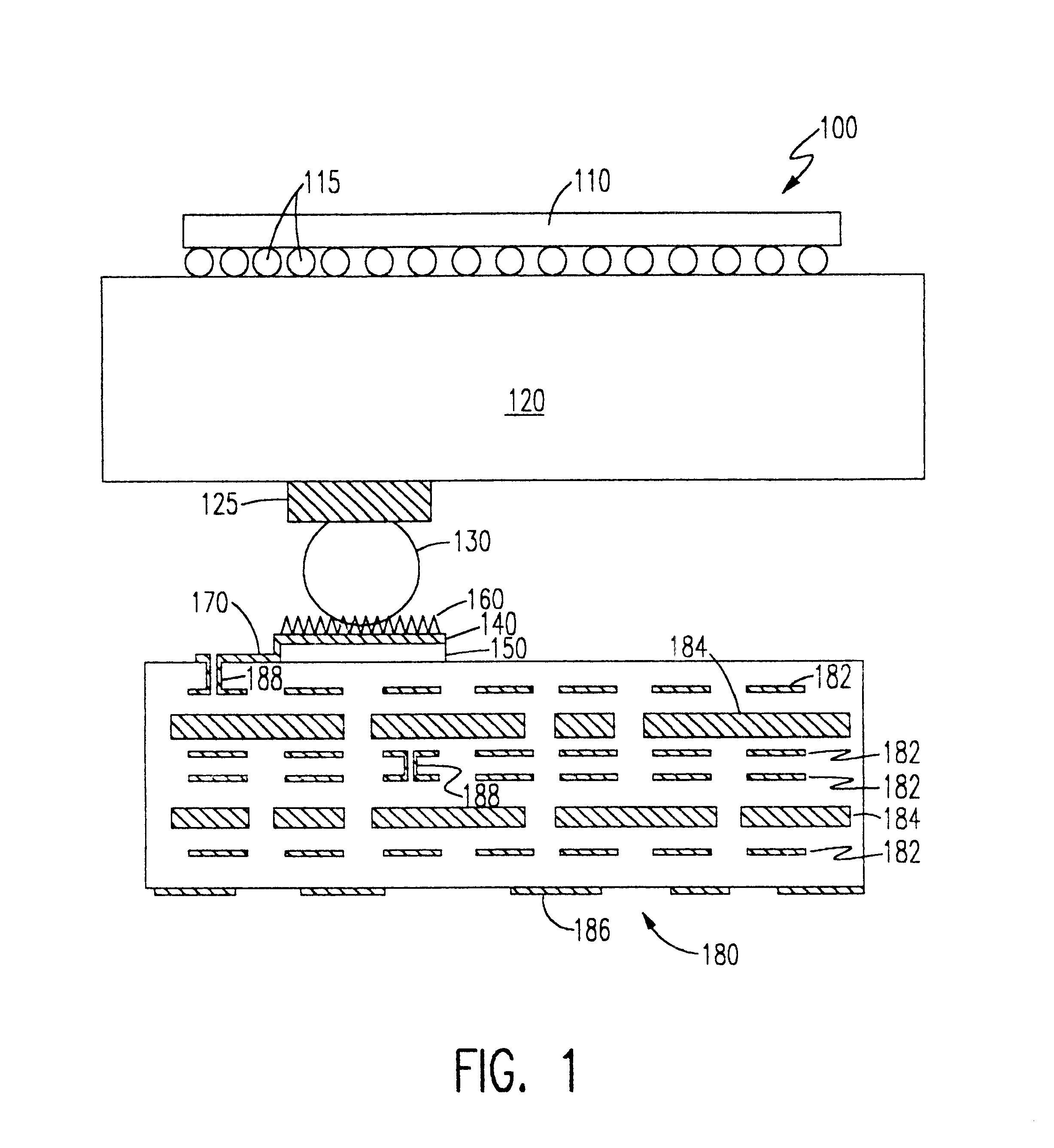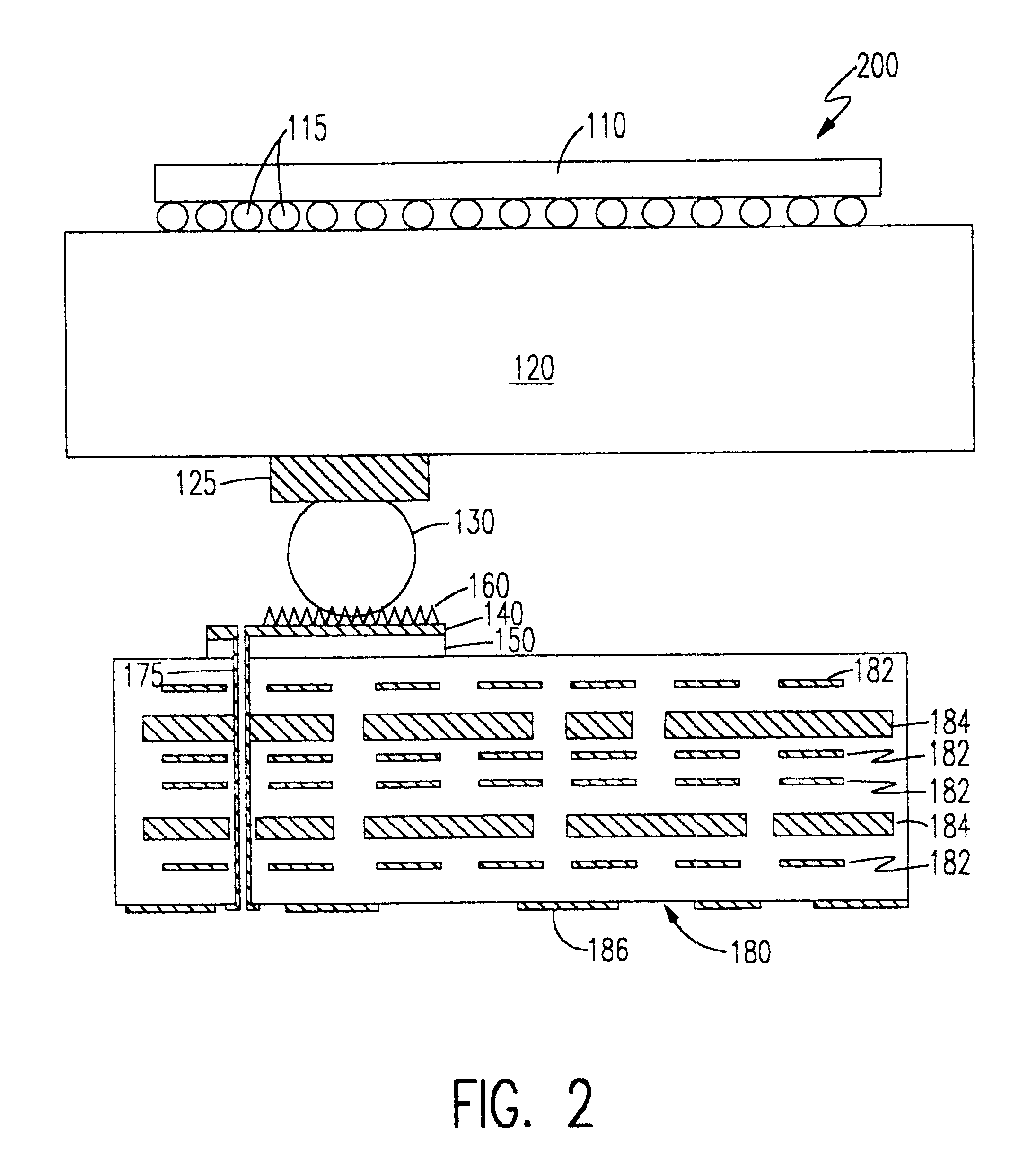Circuit package having low modulus, conformal mounting pads
a technology of conformal mounting and circuit package, which is applied in the direction of printed circuit stress/warp reduction, dielectric characteristics, electrical apparatus construction details, etc., can solve the problems of increasing the amount of heat which must be dissipated by the package, increasing the magnitude of temperature, and increasing the chip siz
- Summary
- Abstract
- Description
- Claims
- Application Information
AI Technical Summary
Benefits of technology
Problems solved by technology
Method used
Image
Examples
Embodiment Construction
Referring now to the drawings, and more particularly to FIG. 1, there is shown, in cross- sectional view, a preferred embodiment 100 of the invention. The basic principle of the invention illustrated in FIG. 1 and other Figures is to place low modulus, dimensionally compliant materials only where necessary in relatively low aspect ratio (e.g. 1:1 or less in ratio of connection pad height to transverse dimension) deposits to avoid or reduce stressing of electrical connections, principally between the LCC and PCB, or the chip during thermal cycling of the package.
Specifically, in accordance with the invention, low modulus materials, preferably in the range of 1000 to 200,000 PSI, are used only directly under or as the mounting pad surface, preferably in the form of bumps or filled mounting wells in order to decouple stresses between packaging levels while largely avoiding compromise of heat transfer from the chip. The surface of low modulus material can be metallized, preferably with ...
PUM
 Login to View More
Login to View More Abstract
Description
Claims
Application Information
 Login to View More
Login to View More - R&D
- Intellectual Property
- Life Sciences
- Materials
- Tech Scout
- Unparalleled Data Quality
- Higher Quality Content
- 60% Fewer Hallucinations
Browse by: Latest US Patents, China's latest patents, Technical Efficacy Thesaurus, Application Domain, Technology Topic, Popular Technical Reports.
© 2025 PatSnap. All rights reserved.Legal|Privacy policy|Modern Slavery Act Transparency Statement|Sitemap|About US| Contact US: help@patsnap.com



